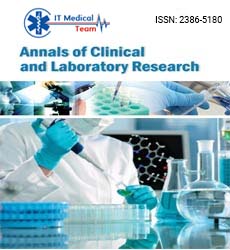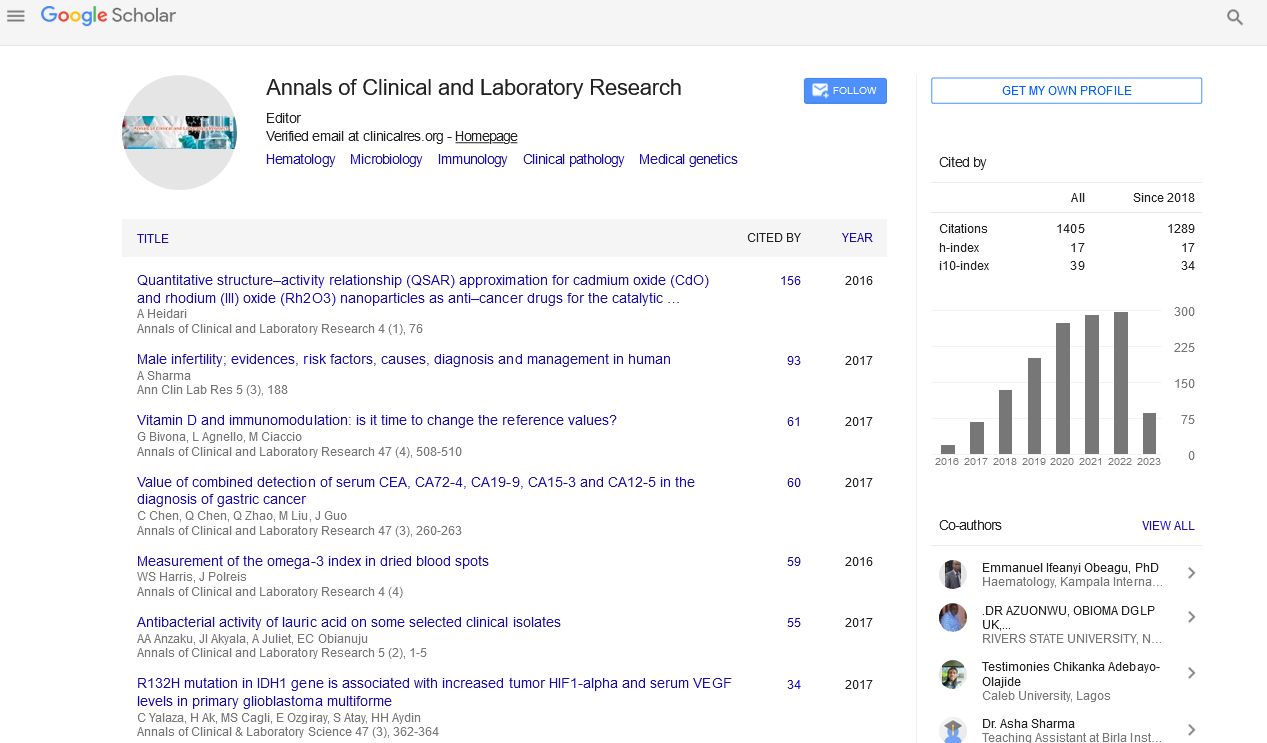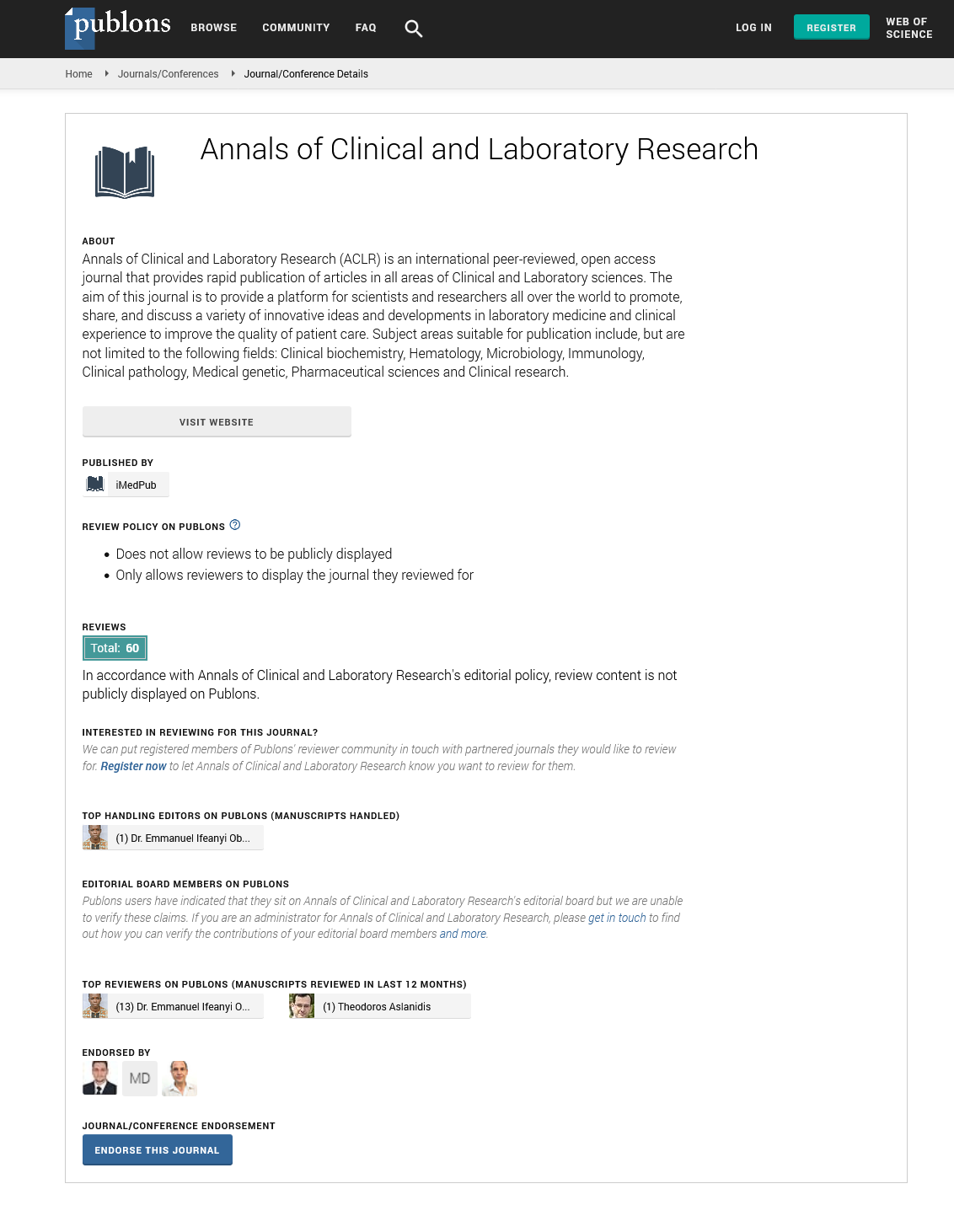Perspective - (2023) Volume 11, Issue 4
Antimicrobial Susceptibility Patterns of Mycobacterium ulcerans Isolates: Implications for Buruli Ulcer Treatment
Rose Jordnii*
Department of Immunology and New Concepts in Immunotherapy, University of Angers, Angers, France
*Correspondence:
Rose Jordnii, Department of Immunology and New Concepts in Immunotherapy,
University of Angers, Angers,
France,
Email:
, Manuscript No. IPACLR-23-13925;
, QC No. IPACLR-23-13925;
Published:
28-Jun-2023, DOI: 10.36648/2386- 5180.23.11.478
Introduction
Buruli Ulcer (BU) is a neglected tropical disease caused by
Mycobacterium ulcerans, a slow-growing bacterium. It primarily
affects the skin and subcutaneous tissues, leading to destructive
lesions and ulcers. BU is prevalent in several countries,
including sub-Saharan Africa, Australia and certain parts of
Asia and the Americas. The conventional treatment for BU
involves a combination of surgical intervention and antibiotics.
However, the emergence of antimicrobial resistance among
M. ulcerans isolates has raised concerns about the efficacy of
antibiotic therapy. This review aims to explore the antimicrobial
susceptibility patterns of M. ulcerans isolates and discuss their
implications for Buruli ulcer treatment [1, 2].
Mycobacterium ulcerans is naturally resistant to several
commonly used antibiotics, including β-lactams, aminoglycosides
and macrolides. However, specific antibiotics have demonstrated
activity against this pathogen. Clarithromycin, rifampicin and
streptomycin are the primary antibiotics used in the treatment
of BU. Clarithromycin inhibit protein synthesis, rifampicin targets
RNA polymerase and streptomycin disrupts protein synthesis
by binding to the 30S ribosomal subunit. These antibiotics have
shown good efficacy in the management of BU lesions and
preventing disease progression [3].
Rifampicin resistance in ulcerans isolates is a growing concern.
Recent studies have reported an increasing prevalence of
rifampicin resistance, primarily due to mutations in the rpoB gene,
which encodes the β-subunit of RNA polymerase. Rifampicin
resistance compromises the effectiveness of combination
therapy and poses a significant challenge in the treatment of BU.
Alternative antibiotics, such as rifabutin, have shown potential
for rifampicin-resistant cases. However, their efficacy and optimal
dosing regimens require further investigation [4].
Clarithromycin resistance is another emerging issue in the
treatment of BU. Clarithromycin resistance has been linked
to mutations in the roll gene, encoding the 23S rRNA. These
mutations reduce the binding affinity of clarithromycin to its
target site, leading to reduced efficacy. Studies have reported
increased rates of clarithromycin resistance in M. ulcerans
isolates, highlighting the need for alternative treatment
options. Azithromycin, another macrolide antibiotic, has shown promising in vitro activity against clarithromycin-resistant
strains. Combination therapy with azithromycin and rifampicin
has demonstrated favourable outcomes in some cases of BU.
Streptomycin have traditionally been a key component of BU
treatment; however, its role is evolving due to concerns about
toxicity and emerging resistance. M. ulcerans isolates generally
exhibit susceptibility to streptomycin, but reports of streptomycin
resistance have also emerged. As a result, the World Health
Organization (WHO) no longer recommends streptomycin as a
first-line drug for BU treatment. Alternative injectable antibiotics,
such as amikacin, may be considered in cases of streptomycin
resistance or intolerance.
Combination therapy is crucial in the treatment of BU to enhance
efficacy and prevent the development of resistance. Currently,
the recommended combination consists of rifampicin and
clarithromycin or azithromycin. However, with the increasing
prevalence of resistance to these antibiotics, alternative
combinations and newer agents are being explored. Fluor
quinolones, such as moxifloxacin and ciprofloxacin, have
demonstrated in vitro activity against M. ulcerans and may have
potential as alternative treatment options. Clinical trials are
needed to assess their safety and efficacy in the management
of BU [5].
Conclusion
The antimicrobial susceptibility patterns of M. ulcerans isolates
have significant implications for the treatment of Buruli ulcer.
The emergence of resistance to rifampicin and clarithromycin poses challenges in the management of BU, necessitating the
exploration of alternative antibiotics and combination therapies.
Streptomycin sensitivity remains an important consideration,
although its role is evolving. Continued research and surveillance
are vital to monitor antimicrobial resistance trends and develop
effective treatment strategies for Buruli ulcer.
References
- Arenaz-Callao MP, Gonzalez del Rio R, Lucia Quintana A, Thompson CJ, Mendoza-Losana A, et al (2019). Triple oral beta-lactam containing therapy for Buruli ulcer treatment shortening. PLoS Neglected Tropical Dis. 13(1):e0007126.
Indexed at, Google Scholar, Cross Ref
- Djouaka R, Zeukeng F, Bigoga JD, Kakou-Ngazoa SE, Akoton R, et al (2018). Domestic animals infected with Mycobacterium ulcerans—Implications for transmission to humans. PLoS Tropical Dis. 12(7):0006572.
Indexed at, Google Scholar, Cross Ref
- Gyamfi E, Narh CA, Quaye C, Abbass A, Dzudzor B, et al (2021). Microbiology of secondary infections in Buruli ulcer lesions; implications for therapeutic interventions. BMC Microbiol. 21(1):1-2.
Indexed at, Google Scholar, Cross Ref
- Matsumura Y, Taki R, Miyachi Y (2012). Case of Buruli ulcer due to Mycobacterium ulcerans ssp. shinshuense with distal cutaneous involvement and synovitis. J Dermatol. 39(1):80-3.
Indexed at, Google Scholar, Cross Ref
- Owusu E, Newman MJ, Addo KK, Addo P (2017). In vitro susceptibility of Mycobacterium ulcerans isolates to selected antimicrobials. Can J Infect Dis Med Microbiol. 975-984.
Indexed at, Google Scholar, Cross Ref
Citation: Jordnii R (2023) Antimicrobial Susceptibility Patterns of Mycobacterium ulcerans Isolates: Implications for Buruli Ulcer Treatment. Ann Clin Lab Res. Vol.11 No.4:478






